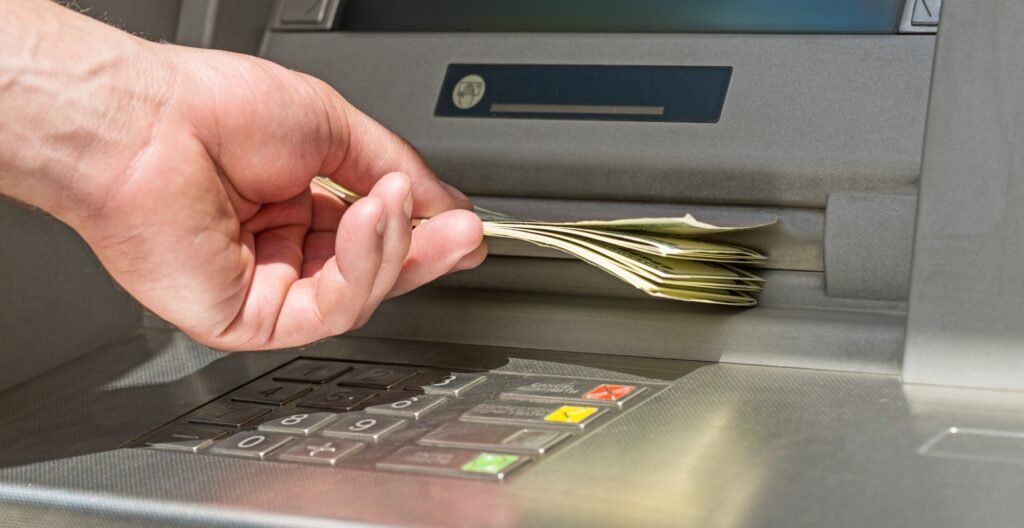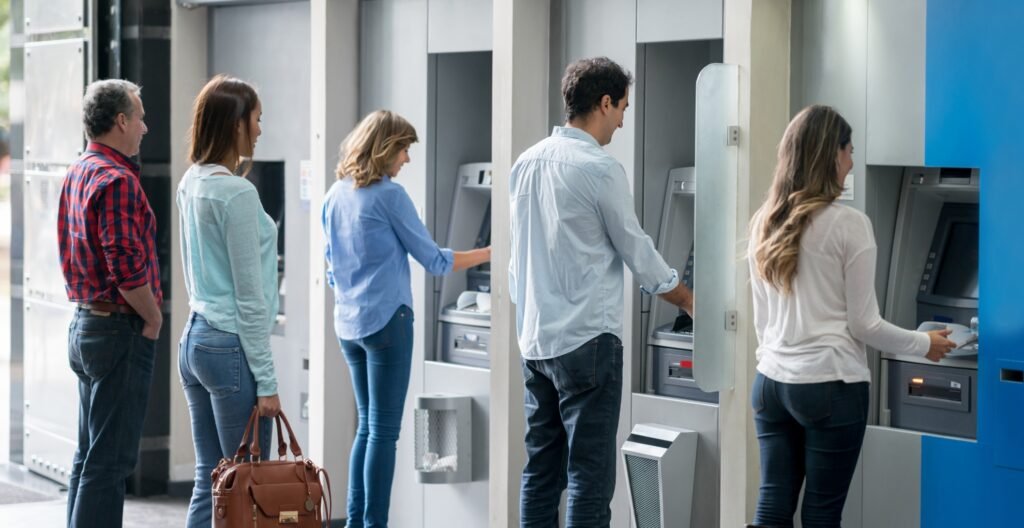Table of Contents
Indeed, onboard ATMs offer a convenient way for passengers to access cash during their seafaring adventures. So, are there ATMs on cruise ships? While not every ship is equipped with these facilities, many of the larger cruise liners ensure that their guests can withdraw money as needed while away from port. These ATMs are strategically placed for easy access, typically in common areas or near customer service desks.
Understanding ATM Accessibility on Cruise Ships
ATMs on cruise ships provide a vital service for guests looking to manage their finances during their voyage. Accessibility can vary, but most modern cruise ships include ATMs as part of their amenities. Passengers need to check with their cruise line before departure to understand the availability and locations of ATMs onboard.
• The presence of ATMs and Their Locations on Various Liners
Cruise lines typically install ATMs in highly trafficked areas of the ship, such as the main lobby, near the casino, or in shopping arcades. The presence of these machines can vary by line and itinerary. Some ships may feature multiple ATMs, while others may have just one, making it crucial for passengers to familiarize themselves with the ship’s layout.
• Operational Hours of Onboard ATMs: What to Expect
Onboard ATMs are generally accessible 24 hours a day, providing round-the-clock service to passengers. However, during times of maintenance or technical issues, ATMs may be temporarily out of service. Guests should also be prepared for the possibility of ATMs running out of cash towards the end of the cruise.
• Comparing ATM Fees at Sea Versus Land Options
ATM fees at sea are often higher than those on land due to the convenience and the cost of satellite communications. Passengers should be aware of these potential extra charges and plan their cash withdrawals accordingly to minimize fees during their cruise.

Unveiling the Financial Nuances of Cruise Ship ATMs
The use of onboard ATMs involves understanding the nuances of fees, currency availability, and exchange rates. While they offer convenience, it’s important to recognize that using them may incur additional costs compared to land-based ATMs. Savvy passengers will weigh these factors when managing their onboard expenses.
• Currency Types Available Through Cruise Ship ATMs
Onboard ATMs typically dispense the currency of the ship’s registry or the most widely used currency along the cruise route. This means passengers can often withdraw US dollars, Euros, or other local currencies, depending on the ship’s itinerary and the regions it services.
• The Reality of Exchange Rates on Cruise Ships
Exchange rates on cruise ships may not be as favorable as those found on land. Passengers should be cautious and consider the potential cost implications of exchanging money onboard, as the rates can significantly impact the amount of cash received from ATMs or currency exchange services.
• Additional Charges: Cash Advances and Hidden Fees
A cash advance from an onboard ATM can come with hefty fees, adding a surcharge to the amount withdrawn. These hidden fees can quickly accumulate, making it imperative for passengers to read the terms carefully and consider how often they access cash onboard.

Smart Alternatives to Using Onboard ATMs
For those looking to avoid the higher fees associated with onboard ATMs, exploring other financial options can be advantageous. Understanding guest recognition programs and other alternatives can lead to more economical and convenient ways to manage money while cruising.
• Why It’s Wise to Exchange Currency Before Embarking
Engaging in currency exchange before setting sail can provide passengers with better rates and more control over their travel budget. By exchanging money in advance, travelers can avoid the potentially less favorable conditions and fees associated with onboard ATMs and currency services.
• The Benefits of Using Cards With No Foreign Transaction Fees on Board
Utilizing credit or debit cards that offer no foreign transaction fees can be a financially sound choice aboard a cruise. Such cards, alongside the strategic use of onboard ATMs and ATMs during port visits, enable passengers to enjoy their cruise without incurring unnecessary expenses related to currency exchange.
• Seeking ATMs on Land During Shore Excursions
During shore excursions, exploring local cruise ports can provide access to ATMs with potentially lower fees and more favorable exchange rates. Passengers can plan their cash needs accordingly, using onshore ATMs as a cost-effective alternative to withdrawing money onboard.

Cruise-Goers’ Guide to Managing Money Easily
Managing finances on a cruise requires a blend of preparation and understanding of the available services. By considering the options provided by cruise companies and the convenience of onboard purchases, guests can navigate their monetary needs with ease.
• Setting Up a Cruise Line Account for Hassle-Free Payments
Establishing a cruise line account streamlines the process of managing onboard purchases. Passengers can conveniently pay for services and activities, often using a wristband or card linked to their account. Additionally, obtaining cruise terminal information and parking details in advance can further simplify the financial aspects of cruising.
• Tips on Carrying and Using Cash While Cruising
While ATMs on cruise ships offer convenience, savvy cruisers know to bring a modest amount of foreign currency for small purchases in port. Engaging with crew members can provide insight into the typical cash needs for each destination. To avoid excessive fees, plan your cash withdrawal needs in advance, coordinating with your financial institution to ensure the best rates. Norwegian Cruise Line, for example, recommends carrying small denominations for tipping and incidental expenses not covered by your cruise fare.
• The Advantage of Spending on Preloaded Travel Cards
Debit cards preloaded with travel funds offer a strategic way to manage your money while cruising. These cards often have fixed exchange rates and can be used just like a regular debit card without the worry of fluctuating currency values. They are also a secure alternative, limiting the impact of potential loss or theft compared to carrying large amounts of cash.

Enhancing Your Cruise Experience
Choosing the right financial options can greatly enhance your cruise experience. By being informed and prepared, you can avoid unnecessary fees and have more to spend on the experiences that matter most. From onboard amenities to exciting excursions, understanding your financial choices means smoother sailing.
• Making the Most of Your Financial Options While Cruising
Maximizing your financial options while cruising requires a blend of preparation and adaptability. Ensuring access to various payment methods, including cash, credit, and onboard accounts, provides flexibility and ease of mind. Additionally, taking advantage of loyalty programs offered by cruise lines can yield savings and benefits that enhance your overall experience.
• Ensuring a Smooth Sailing: Financial Preparations Before You Board
Proper financial preparations before boarding your cruise can pave the way for a carefree vacation. From setting budgets to notifying your bank of travel plans, these steps help prevent financial hiccups. Proactively managing your money means you can focus on the horizon and the adventures that await.
A Deep Dive Into Cruise Ship Monetary Policies
A comprehensive understanding of cruise ship monetary policies can save you from unexpected expenses. Familiarize yourself with the currency conversion process, as ATMs on ships may offer different exchange rates compared to onshore financial institutions. Also, be aware that exchange rates can fluctuate, potentially affecting the cost of your onboard purchases and services.
• Gratuities and Onboard Expenses: What to Expect
When planning for gratuities and onboard expenses, anticipate automatic service charges on your account, which can vary by cruise line. These gratuities cover the hardworking staff who make your cruise experience enjoyable. Additionally, budget for optional expenses such as specialty dining, spa treatments, and shore excursions to ensure a well-rounded cruise experience.
• Cruise Ship Cashless Systems: How They Work
Most cruise lines have adopted cashless systems, utilizing your room key as a charge card for onboard expenses. Currency conversion is typically handled at the point of sale, with exchange rates determined by the cruise line. This system offers convenience, allowing you to enjoy cruise deals and amenities with a simple swipe, but it’s always wise to check your account frequently for accuracy.
• Shipboard Health and Safety: Financial Considerations
Financial considerations for shipboard health and safety include budgeting for potential medical services, which may not be covered by your regular health insurance. It’s recommended to purchase travel insurance that includes medical coverage, ensuring that unexpected health issues do not become financial burdens during your cruise vacation.
Conclusion: Navigating Your Seafaring Finances With Confidence
Embarking on a cruise vacation offers more than just the lure of the open seas and exciting shore excursions; it’s also about the ease and convenience that come with well-planned financial management. Automatic teller machines are located conveniently on the promenade deck or mezzanine, ensuring that access to cash is just a stroll away. So, as you set sail, rest assured that with a bit of preparation, you can navigate your seafaring finances with the same confidence as the captain at the helm.

Hi, I’m Patricia—a lifelong travel enthusiast with a passion for luxury cruises. Over the years, I’ve experienced some of the world’s most celebrated ships and itineraries, and I love sharing my knowledge with fellow cruise lovers. Whether you’re looking for destination ideas, advice on the best cruise lines, or tips for a smooth sailing, my goal is to help you make the most of your time at sea. With two grown children who share my love for travel, cruising has been a family affair, and I’m here to share what I’ve learned.




